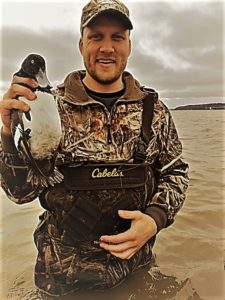By Bruce Ross, Executive Director
This article originally appeared in Wisconsin Waterfowl Association’s September, 2020 Newsletter edition.
Dr. Fowler came to the DNR to fill a too-long vacant position that focuses on the research that should underpin waterfowl management decisions in Wisconsin. And he’s been hard at work in the year that he’s been here. Many of you met him if you came to WWA’s annual meeting at Lambeau in January (unfortunately, some of his work had to be put on a shelf during COVID, but many other efforts have gone forward with vigor):
- His recent work included the meta study that concluded a two hen mallard bag limit is biologically supported.
- The Wisconsin ringneck duck distribution, density and preferred habitat is understudied. He’s focusing attention on that– which ones are using WI and which are moving through, including the use of citizen science and new geolocator technology in reporting the whereabouts of an always elusive duck. Duckhunters may soon be finding such geolocators on harvested ringbills.
- Where are most Wisconsin-harvested ducks born? Using isotopes to trace the origin of harvested ducks may help us determine where to focus effort in breeding them.
- Current collaborations with the following institutions:
- University of Minnesota – understanding movement of trumpeter swans through radio tracking.
- UW Steven’s Point – understanding wood duck movements through banding data analysis and isotope studies to determine what factors influence numbers and harvest
- Dr. Fowler – or should we call him Captain Fowler – can now use drones to better study duck locations, numbers and species.
- Using older data developed by his predecessor Ron Gatti; what impact does local landscape have on the nesting and production success of Blue Wing Teal.
- Future Work:
- Partnering with USFWS to better assess sea and diving duck locations and movement, which employs hi-resolution aerial imagery and compares that to human counting methods.
- Developing a consistent and systematic wetland management approach that shares information between wetland restoration practitioners to develop and employ the best wetland design practices efficiently.
There’s more detail and neat pics in the slide show he used, even if it needs Dr. Drew’s scholarly insights to understand fully. Check it out here: 2020 WWF Waterfowl Summit Program Update

